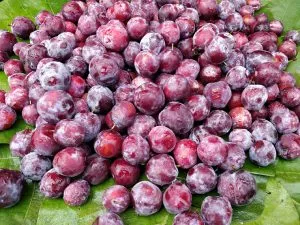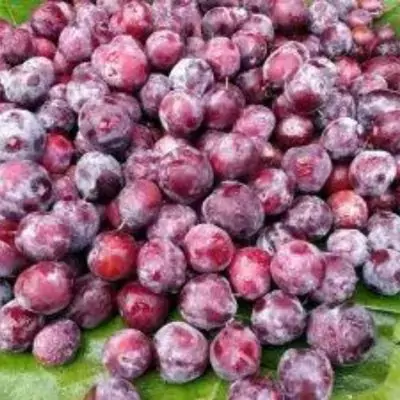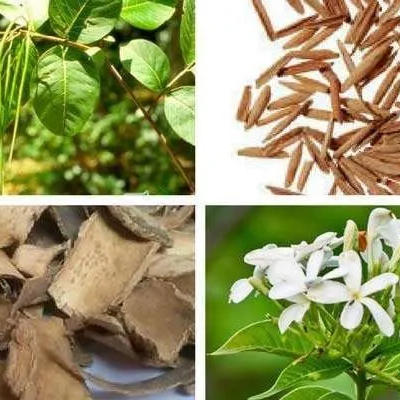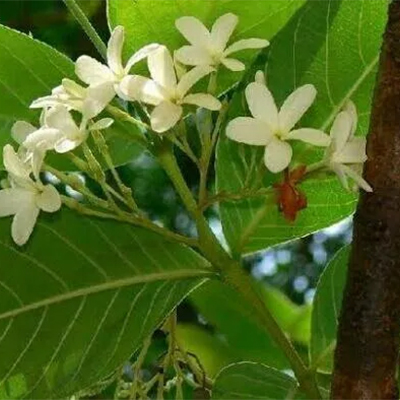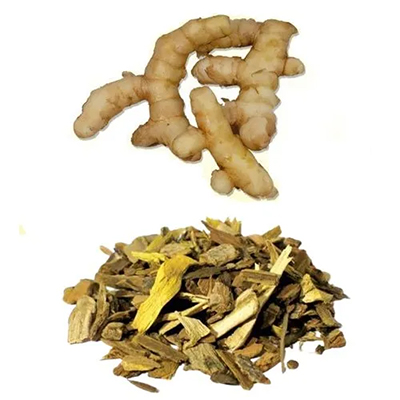On This Page
Falsa Fruit, Phalsa (Grewia asiatica) – Therapeutic Uses and Benefits
Introduction
Grewia asiatica is commonly known as Indian Sherbet Berry, Falsa Fruit, Phalsa, Parushaka, etc., which is high in health and low in popularity. But recently due to research findings regarding its powerhouse of vitamins and minerals, it tops the list of exotic fruits in our country. It has various therapeutic uses, benefits, and medicinal properties. It’s the commercial fruit of the summer season, as it helps to reduce the burning sensation in the summer season.
Its fruit has a sweet and sour taste that will leave you asking for more. It is indigenous throughout most of India and Southeast Asia and in India commercially cultivated in Bombay and Punjab. In Ayurveda, it is quoted as Parushak and its literal meaning “that which takes care of” or “that which fills up”. The whole plant of Grewia Asiatica contributes medicinal properties like cardioprotective, hypotensive, antibiotic, antioxidant, etc. In Ayurvedic classical texts, the whole plant of Parushaka is sweet, astringent, cooling, appetizer, demulcent, tonic, anti-thirst, and aphrodisiac.
Basonym of Herb Parushaka
पिपर्ति पालयति पित्तदाहादिभ्यः।
पूरयति वा फलपाके माधुर्यं।
Parushka alleviates Pitta Dosha and Daha (burning sensation). After ripening the fruit will be very sweet.
Synonyms of Parushaka
परुषकं नीलपूर्णं गिरिपीलु परावरं ।
नीलमण्डलमल्पास्थि परुषच्च परुस्तथा ।।
Parushka alleviates Pitta Dosha and Daha (burning sensation). After ripening the fruit will be very sweet.
Main Synonyms of Parushaka
परापर- परम् अत्यन्तं आपिपर्ति बृहणत्वात ।
The fruits of Parushaka are very nutritious.
अल्पास्थि – The fruit contains more pulp and small seeds.
Some other synonyms of Parushaka are as follows:
Paruska, Parusam, Nilarna, Ropana, Dhanvanacchada, Paravata, Mriduphala, Purusa, Parusa, Paru.
Regional Name of Parushaka
- Phalsa, Sukri, Farsa, Falsa (Hindi)
- Phalsa (Beng.)
- Phalsa (Guj.)
- Phalsai, Phalsi, Parpaka (Mar.)
- Pharosakoli (Oriya)
- Jangolat (Santal)
- Palisa, Phalisa, Dagali, Byadachi (Tam.)
- Jana, Nallajana, Peddajana, Phunki(Tel.)
- Phalashah (Urdu)
Botanical Name
Grewia asiatica Linn.
Synonym:– Grewia subinaequaelis Dc., G. hainesiana Dc.
Family
Malvaceae
Ayurveda Reference for Parushaka (Grewia asiatica)

Scientific classification of Bijaka – Asana – Vijayasara
| Kingdom | Plantae |
| Clade | Tracheophytes |
| Clade | Angiosperms |
| Clade | Eudicots |
| Clade | Rosids |
| Order | Malvales |
| Family | Malvaceae |
| Genus | Grewia |
| Species | G. asiatica |
Classification of Parushaka as per Charaka and Sushruta
- Charka: Virechnopaga, Jwarahara, Shramahara Mahakshaya
- Sushruta: Parushakadi Gana
Parushaka Description in Brihtrayi
| Charaka | Shusruta | Vagbhata (Ashtang Hridya) |
| C. S. Su. 4/ 24, 39, 40 | S. S. Su. 38/ 42 | A. H. Su. 6/ 119, 136 |
| C. S. Su. 15/ 6 | S. S. Su. 46/ 163, 172, 334, 337, 390 | A. H. Su. 10/ 22 |
| C. S. Su. 23/ 37 | S. S. Ci. 7/ 15, 10, 14 | A. H. Su. 15/ 11, 13 |
| C. S. Su. 27/ 125, 129, 132, 274 | S. S. Chi. 22/ 62 | A. H. Sa. 1/ 14 |
| C. S. Ni. 5/ 7 | S. S. Chi. 38/ 50, 56 | A. H. Ci. 1/ 56, 67, 76 |
| C. S. Vi. 8/ 144, 146 | S. S. Sa. 2/ 10 | A. H. Ci. 2/ 14 |
| C. S. Sa. 8/ 41 | S. S. Sa. 10/ 23 | A. H. Ci. 5/ 18 |
| C. S. Chi. 3/ 156, 206, | S. S. U. 39/ 173, 189 | A. H. Ci. 6/ 44 |
| C. S. Chi. 4/ 33 | S. S. U. 42/ 71, 108 | A. H. Ci. 7/ 20, 45 |
| C. S. Chi. 5/ 124, 134 | S. S. U. 44/28 | A. H. Ci. 13/ 16 |
| C. S. Chi. 11/ 36 | S. S. U. 47/ 31, 40 | A. H. Su. |
| C. S. Chi. 18/ 39 | A. H. Ci. 14/ 75 | |
| C. S. Chi. 21/ 109, 112 | A. H. U. 22/ 61 | |
| C. S. Chi. 22/ 42 | A. H. U. 24/ 50 | |
| C. S. Chi. 24/ 136, 140, 149 | A. H. U. 34/ 29, 37 | |
| C. S. Chi. 26/ 90, 167 | A. H. U. 37/ 49 | |
| C. S. Chi. 29/ 59, 85, 96 | ||
| C. S. Chi. 30/ 53, 66 | ||
| C. S. K. 1/ 13 | ||
| C. S. K. 7/ 25 | ||
| C. S. K. 11/ 6 | ||
| C. S. Si. 11/ 25 | ||
| C. S. Si. 12/ 30, 36 |
External Morphology of Grewia Asiatica (Parushaka)
A medium-sized tree with grayish-white to grayish-brown bark, sapwood whitish heartwood small, irregularly shaped, and dark brown, young parts are stellate pubescent.
Stem-bark: Stem bark externally warty, Uneven, grayish green, internally reddish-brown, thick, fibrous, tough, leathery, and sometimes creamish.
Leaves: Leaves are 7-17 & 6-12 cm., ovate or sub-orbicular, heart-shaped, acute, sub-acuminate or cuspidate, sharply and of-ten coarsely doubly serrated, sub-glabrous above, hoary-tomentose beneath, rounded or only slightly cordate at the base, 5-7-nerved; petioles 6-12 mm. long, thickened at the top, stipules linear to foliaceous and broadly falcate. Shortly petioled leaves. Matured leaves 17.5-21.5 x12.75-17.5 cm.
Flowers: Flower buds broadly cylindric or clavate, peduncle axillary, usually many, long and slender, far exceeding the petioles and often 3-4 times as long up to 4 cm. long, bracts beneath the pedicels lanceolate; sepals 6-12 mm., linear-oblong, acute, stellately pubescent or tomentose; petals 3-6mm. yellow or reddish yellow, oblong or ovate-oblong, jagged or entire, gland with a wide fleshy margin, pubescent towards the edges, gonopore long, stigma with 4short, rounded lobes, a style much thickened above.
Fruits: Fruits are red globose, 6-8 mm. in diam., with pleasantly acid pulp, indistinctly lobed, pyrenes 1-2 always 1-celled only. Fruits shortly stalked fleshy fibrous drupe, grayish purple at maturity, tomentose, the surface having black circular depressed spots with large stellate covering trichomes and rest of the surface with small stellate covering trichomes; 1-2 seeds with stony hard seed coat, painted at one end and grooved on the surface, seed 1-2 chambered, light brown, thin, papery, inner seed coat, an embryo with 2 leafy cotyledons and oily endosperm.
Flowering and Fruiting Time of Parushaka
Flowering of Parushaka will occur from spring to the summer season. Fruits ripen in hotter months and are available on market as edible fruits.
Distribution of Parushaka
Globally Grewia asiatica is distributed in India (north-east India), Bangladesh Srilanka, tropical countries, Indo-Pakistan.
In India, it is distributed in Karnataka, West Bengal, Orissa, Himachal Pradesh, Punjab, Haryana, Delhi, Gujrat, Maharashtra, Andhra Pradesh, Tamil Nadu.
Useful Part of Parushaka
Fruit, Leaf, Root
Nutritional Value of Parushaka (Phalsa)
| Nutrients | Value/ 100g |
| Protein (g) | 1.57 |
| Total lipid (fat) (g) | <0.1 |
| Carbohydrate (g) | 21.1 |
| Ash (g) | 1.1 |
| Fiber (g) | 5.53 |
| Calcium (mg) | 136 |
| Iron (mg) | 1.08 |
| Phosphorus (mg) | 24.2 |
| Potassium (mg) | 372 |
| Sodium (mg) | 17.3 |
| Vitamin B1 (mg) | 0.02 |
| Vitamin B3 (mg) | 0.825 |
| Vitamin C (mg) | 4.385 |
| Vitamin B2 (mg) | 0.264 |
| Vitamin A (g) | 16.11 |
Important Phytoconstituent of Parushaka
Bark: Beta-amyrin, botulin, lupeol
Flower: Glycosides like pelargonidin, delphinidin, cyanidin
Seeds: Seeds of Parusaka fruits contain oil. Leaves contain crude protein 10.1 %, fat 6.8 %, crude fibre 14.1%, nitrogen free extract 54.8%, carbohydrate 68.9%, ash 14.2%, calcium 4.18%, phosphorus 0.25% and tannin.
Recent Research on Parushaka
Leaves
- Antimicrobial activities
- Anticancer activities
- Antiplatelet activities
- Antiemetic activities
Fruit
- Anticancer properties
- Antioxidant properties
- Radioprotective properties
- Antihyperglycemic properties
Stem Bark
- Analgesic activities
- Anti-inflammatory activities.
Rasa-Panchaka (Properties) of Parushaka
| Rasa (Taste) | Madhura, Amla, Kshaya (sweet, sour, astringent in taste) |
| Guna (Virtue) | Laghu (light), Snigdha (Unctuous) |
| Virya (Potency) | Sheet (cold potency) |
| Vipaka (Post-Digestion) | Madhura (sweet) |
| Karma (Action) | Pitta-Vaathara, Hridya (cardio-tonic), Pittahara, Brihana (improve nutrition level of body), Vishtambhi (food which creates constipation) |
Prayogarha Vyadhi (Therapeutic Indication) of Parushaka
Raktapitta, Daha, Jwara, Kshaya, Krimi
Aamyik Prayog (Therapeutic Uses) of Parushaka
- Shoola (Colic) – Parushaka, Mridvika, Kharjura, and Shringataka fruit juices mixed with sugar should be taken to alleviate colic caused by Pitta. (Sushruta)
- Shukra Dosha (Disorder of semen) – In the disorder of semen known as Puya-prakhya, Ghrita cooked with Parushaka and Vata should be given. (Sharangadhara)
- Trishna (Thirst) – Cold juice of Parushaka should be given. (Charaka)
- Rohini (Diphtheria) – Gargle with the decoction of Draksha and Parushaka relieves Rohini. (Bhavaprakasha)
- Sukha-Prasava (For easy delivery) – In case of difficult labor, the paste of the root of Parushaka should be applied to the umbilicus, pelvis, vulva, etc., which facilitates easy delivery. (Vrindmadhava)
Important Benefits of Parushaka
- Anemia (Pandu): Parushaka is a rich source of the mineral iron, which is considered to play the main role in the smooth flow and synthesis of blood. Therefore, in the case of anemia, it boosts iron levels and fights against dizziness and fatigue which are considered common symptoms of anemia.
- Joint pain (Sandhi peeda): Recent research proved the effectiveness of the unripe fruit of Phalsa as an anti-inflammatory. So in conditions like osteoporosis, rheumatoid arthritis, etc. along with alleviating severe pain, it increases the mobility of the joints.
- Diabetes (Prameha): Grewia asiatica is inherently blessed with a low glycemic index and polyphenols antioxidant. Research proved that it suppresses the sudden spikes in blood glucose concentration, therefore it is an ideal fruit to include in the diet of diabetic people.
- Hypertension (Uccha Rakta Chapa): Parushaka is rich in minerals like potassium and phosphorus due to which it works wonders in lowering the blood pressure level. Along with this Parushaka helps to prevent the clogging of cholesterol in the blood vessels and the accumulation of lipids in the bloodstream. Therefore it also helps in various cardiac disorders like atherosclerosis, arrhythmia, myocardial infarction, etc.
- Parushaka helps to regulate electrolyte imbalance in the body by balancing the key ions i.e sodium, chloride and potassium, etc.
Matra (Therapeutic Administration and Dosage) of Parushaka
- Fruit juice – 10-20 ml

Have A Health Issue?
Consult Online
- Dr. Sahil Gupta (B.A.M.S., M.H.A.)
Ayurvedic Allergy Specialist
CEO & Founder of IAFA®
Classical References of Parushaka
Kaiyadeva Nighantu Aushadhiadi Varga, 391-393
….ण्पक्वं स्वादु अम्लं शुक्रलं हिमं ।।
रोचनं मधुर पाके हृद्यं विष्टम्भि बृहणं ।
हन्ति मारुतपित्त पित्तास्त्र तृष्णा दाह क्षत क्षयानं ।।
Raja Nighantu, Amradivarga, 110-111
परुषकगुणाः
परुषकम अम्लं कटुकं कफार्ति्तजिद्वातापहं तत्फलमेव पित्तदम ।
सोष्णच्च पक्वं मधुरं रुचिप्रदम् पित्तापह्म शोफहरच्च पीतं ।।
Bhavaprakasha Chikitsa, 66-135
रोहिणीनामकगलरोगे – ….कवलो द्राक्षापरुषैः क्वथितो हितः।
Shodhala, Gadanigraha, Vrindmadhava, 65-13, Vangsena- Striroga, 229
मूढगर्भापकर्षणे
परुषकशिफालेपः स्थिरामूलकृतो अथवा।
नाभिबस्तिभगाधेषु मूढगर्भापकर्षणः ।।
Charaka Samhita, Chikitsa, 12-147
मदात्ययस्य पिपासायां
“परुषकानां पीलुनां रसं।
Dhanvantri Nighantu
परुषकगुणाः .
परुष्कं फलं चाम्लं वातघ्नं पित्तकृद् गुरु।
तदेव पक्वं मधुरं वातपित्त निबर्हणम।।
Charaka Samhita, Chikitsa, 29-58/65, Bhavprakash, Vatarakta Adhikaram, 29-90/92
वात रक्ते पारुषकं घृतं ।
Chakradutta, Striroga Chikitsa, 12-147
परुषकमूलं सुखप्रसवक संप्रयोगः ।
परुषक मूललेपस्तद्वत पृथक् पृथक् ।।
Sushruta Samhita, Uttara, 42-108
पैत्तिक शूले .
परुषकाणि मृद्धीका खर्जुरो दक जान्यपि।
तत् पिबेच्छ शर्करा युक्तं पित्त शूल निवारणं।।
Sushruta Samhita, Sharira, 2-9
पूय प्रख्ये शुक्रदोषे
परुषक वटादिभ्याम पूय प्रख्ये च साधितम् ।
Specific Formulation of Parushaka
- Mahadrakshadi Kwath (Bhaishjya Ratnavalli)
- Brihatishatavari Ghrita (Charaka)
- Mahachandanadi Taila (Bhaishjya Ratnavalli)
Contraindication and Side Effects of Parushaka
- Parushaka (Phalsa) fruit led to extreme fluctuation of body temperature, so it is suggested to take Phalsa in little quantity by pregnant women and lactating mothers.
- Dewiness and flavor of Phalsa only remain for a few days post-harvest, so it must be consumed promptly.
Suggestive Readings Regarding Parushaka
- Preeti, Pandya & Parul, Joshi & Dei, Laxmipriya. (2013). Pharmacognostical and Phytochemical Evaluation of Grewia asiatica Linn (Tiliaceae) Fruit Pulp and Seed. 4. 333-336.
- Debajyoti, Das & Mitra, Achintya & Debdas, Datta & Saha, Achintya & Jayram, Hazra. (2012). Evaluation of antipyretic and analgesic activity of parusaka (Grewia asiatica Linn.): An indigenous Indian plant. International Journal of Research in Ayurveda and Pharmacy. 3. 519-523.
- Nutritional and medicinal potential of Grewia subinaequalis DC. (syn. G. asiatica.) (Phalsa)
- International Journal of Research in Ayurveda and Pharmacy (IJRAP) 2012 Vol.3 No.4 pp.519-523 ref.14
- Khanal, D. P., Raut, B., & Kafle, M. (2016). A Comparative Study on Phytochemical And Biological Activities of two Grewia Species. Journal of Manmohan Memorial Institute of Health Sciences, 2, 53–60. https://doi.org/10.3126/jmmihs.v2i0.15797
- Antifungal, antioxidant and DNA protection potential of Grewia asiatica L. leaves acetone extract
- Antioxidant, Antimicrobial Activity and Medicinal Properties of Grewia asiatica L.
References
- Agnivesha, Charaka, Dridhabala . In: Charaka Samhita, ed. Vaidya Jadavaji Trikamji Aacharya., editor. Varanasi: Chaukhamba Sanskrit Sansthan; 2009.
- Sushruta. In: Sushruta Samhita, Sutra Sthana, ed. Vaidya Jadavji Trikamji Acharya., editor. Varanasi: Choukhambha Orientalia; 2005.
- Vagbhata. In: Ashtanga Hrudaya, 9th ed. Anna Moreshwar Kunte, Krishnashastri Navare, Harishastri, editors. Varanasi: Choukhambha Orientalia; 2005.
- Bhavamishra . In: Bhava Prakasha Nigantu, 11th ed. part 2. Brahma Shankara Mishra., editor. Varanasi: Choukhambha Bharati Academy; 2009.
- Dhanvantari Nighantu, Diwedi BK. Editor. Guduchyadi varga, Chaukhamba Krishnadas Academy, Varanasi; 2008.
- Sharma PV, Kaideva Nighantu. Aushadhi Varga. Chaukhamba Orientalia, Varanasi; 2006:
- Tripathi I., Raja Nighantu, Guduchyadi varga, Chaukhamba Krishnadas Academy; Varanasi; 2010
- Dr. Gyanendra Pandey, Dravyaguna Vigyana, reprint 2012, Chwkhamba Krishnadas Academy
- K.niteshwar Dravyagunavigyana, reprint 2017.
- Dr. J.L.N. Sastry and Dr. B.S. Sastry, Dravyaguna Vigyana, Chaukhambha Orientalia, Varanasi.
- Chakrapanidatta, chakradatta with the vaidayaprabhahindi commentary by indradevatripathi, chaukambha sankritasansthan, varanai 2nd Edition, 1994.
- Nutritional and medicinal potential of Grewia subinaequalis DC. (syn. G. asiatica.) (Phalsa), DOI: 10.5897/JMPR2015.5724
- https://indiabiodiversity.org/species/show/264319
- https://www.eurekaselect.com/article/71462
- http://www.stuartxchange.org/Phalsa
Ayurveda is an Indian system of medicine that is popular since ancient times. Dr. Gupta’s IAFA® has been conducting research studies to find out different phytoconstituents of herbs and their action in the body. Such knowledge acquired by our experts is used in the preparation of medicines and providing the treatment facilities safely and effectively. IAFA® is the provider of safe and effective treatment for a wide range of diseases, mainly allergic diseases all based on Ayurveda.

